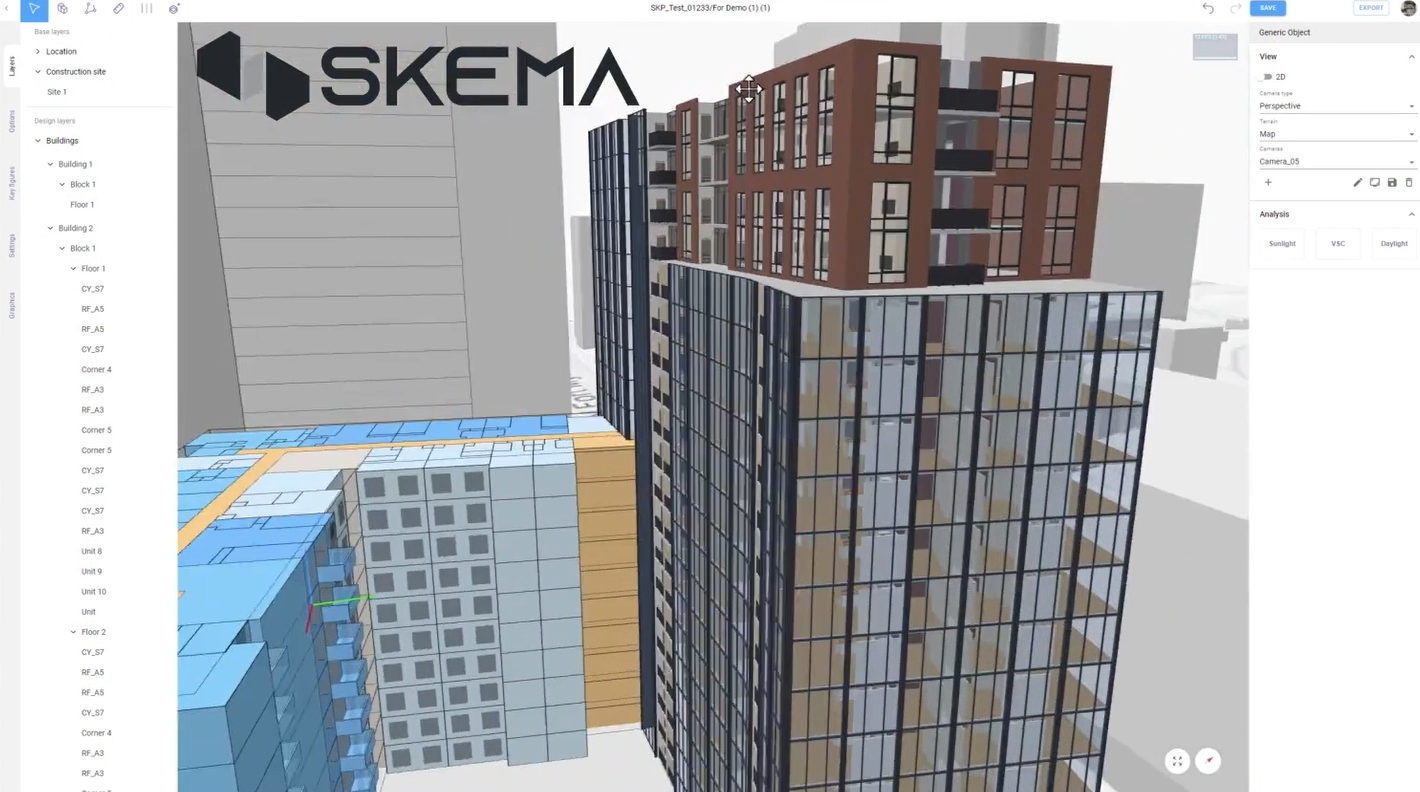
Design in Rhino. Deliver in Revit. Sync It All with Skema
The Skema for Rhino integration is rewriting the rules of design interoperability. If you’re still manually remodeling Rhino massing in Revit, then you know just how frustrating the process can be. This integration will allow your team to work smarter, your concepts to go further, and your BIM deliverables are just a button away. No scripting. No remodeling. No mismatches. Just momentum.

A Smart Playbook for New AEC Software
In AEC, coopetition is still a bit of a novel concept. But now, thanks to APIs, open standards, and the cloud, it can gain serious traction in AEC. Instead of every vendor trying to build a jack-of-all-trades monstrosity, they can focus on doing one thing really well - and make sure it plays nicely with others.

Culture Eats Strategy for Lunch: It’s No Different for AI
AI has the potential to help firms execute more intentional, informed decisions—eliminating inefficiencies that lead to approximate solutions and costly field issues. But without a clear understanding of your own firm’s culture, priorities, and balancing forces, AI could just as easily create misalignment as it could create value.

The AI Opportunity Gap: From Data to Insights to Decisions
For AI to truly revolutionize the AEC industry, it must move beyond static documentation and toward dynamic, real-time decision-making. AI tools that simply aggregate existing data will drive firms toward the safest, most common solutions rather than fostering innovation. AEC needs AI that delivers differentiated, high-value insights—helping firms make better decisions, not just organize past ones.

Why AEC Needs a Swiss Army Knife: The Power of Tool Chains
By properly implementing tool chains, AEC professionals can reduce data loss and inefficiencies in their workflows as they move between different tools. Skema is the only tool that is designed to support a native-data toolchain, instead of using object types and mapping to try to translate data between systems.

More Control, Less Risk: 4 Essential Questions About Skema
The AEC industry is no stranger to tedious, painstaking workflows. Designers spend weeks iterating to achieve a functional, reliable design scheme—only for production teams to spend even more time rationalizing it and translating it into BIM models for construction. Niknaz Aftahi, founder and CEO of aec+tech and a trusted voice in design technology, explored how Skema challenges assumptions and redefines what's possible.

The Future of Computational Design: Where Scripts and Content Converge
Architectural design is at a turning point. By combining Skema’s content-driven approach with script-driven computational workflows, design teams can achieve faster timelines, higher-quality results, and more inclusive collaboration.

4 Game-Changing Ways Skema Reinvents Architectural Design Workflows
Architects waste hours on repetitive tasks and struggle to adapt designs as project requirements evolve. Enter Skema - a generative design tool designed to reuse existing assets, simplify workflows, and keep designers in creative control.

Building Serious BIM for SketchUp Users: 3 Key Milestones with Trimble
Embracing ‘coopetition’, by competing through cooperation. For the first time, SketchUp users can experience a fast, easy, and seamless workflow between SketchUp and Revit, enabling serious BIM deliverables without the headaches - all with Skema for SketchUp.

Case Study: Skema for Data Center Design
Learn how HED’s Amanda Gioia used Skema to boost productivity and streamline data center design workflows.

Driving Innovation in AECO: Three Takeaways from BuiltWorlds
BuiltWorlds’ AECO Innovation: A Full Lifecycle Perspective brought industry leaders together to discuss trends, tech, and transformation. Here are our Key Takeaways.

Skema Announces New Integration with Trimble SketchUp
Skema for SketchUp delivers Serious BIM with SketchUp ease. Read on to learn about our SketchUp extension and how it gives design firms a seamless way to leverage SketchUp’s early design capabilities to drive BIM (Building Information Modeling) workflows and Revit deliverables.

Supercharging Hospitality Design: Rapid Prototyping with Skema’s Design Catalogs
For hotels and resorts, Skema fast tracks the layouts of guest rooms, back-of-house areas, and function wings. Skema shaves time off feasibility studies, prototyping and options generation – while honoring creativity and the unique designs that define boutique hotels and resort properties.

Skema Unveils Skema 2024: Revolutionizing Schematic-to-BIM Design Workflow
Read our press release. Skema 2024 transforms a firm’s proven and BIM-rich unitized design elements – whether created in Revit, ArchiCAD, IFC, or any other BIM software – into Design Catalogs for new build, adaptive reuse, and modular projects. The new capabilities support modern methods of construction (MMC) and can save weeks of laborious BIM modeling tasks.

Architosh Reveals Real-World AI in AEC
Learn more about how Skema uses AI and machine learning in a few excerpts from a recent Architosh feature.

AI, Pickleball, and Design Catalogs: your burning questions about Skema
Skema is a new kind of design software. Because it leverages past designs for new designs, it doesn’t fit neatly into traditional design phases. And that opens all kinds of questions. So, we’ve compiled this FAQ of some of the most common questions we get in our customer meetings. Check out these Q&As and see how versatile Skema is. It's changing the game for architects and designers.

The Charette Edge: A blueprint for fast-track onboarding
Our charettes are our “white glove service” to get you and your teams up and running on Skema quickly within your firm’s specific context.

Re-thinking Rules of Thumb: New Opportunities in Architectural Design Timelines
It’s time to talk about the new opportunities in architectural design timelines. Our clients tell us that Skema fast forwards their process by six to eight weeks. That means you could deliver a DD package in 18 weeks, with a high probability that you improved quality by automating all those highly repetitive modeling tasks that sometimes lead to unnecessary errors.

AI Buzz in the AEC Industry #AIinAEC2024
Artificial intelligence (AI) is all anyone seems to hear about now-a-days, and it’s honestly for good reason. No matter what industry you’re in, AI will likely be a game-changer for you at some point. The AEC industry is no different – change is coming.

Friend or Foe: Top Reasons AI is Our Ally in Architectural Design
In the dynamic world of architectural design, the integration of AI-driven automation isn't just a trend – it's a game-changer. While some architects are cautiously testing the waters of AI integration into their practice, others are fully embracing it, diving in headfirst. Here are four reasons why AI is our trusted ally, particularly when paired with innovative solutions like Skema
